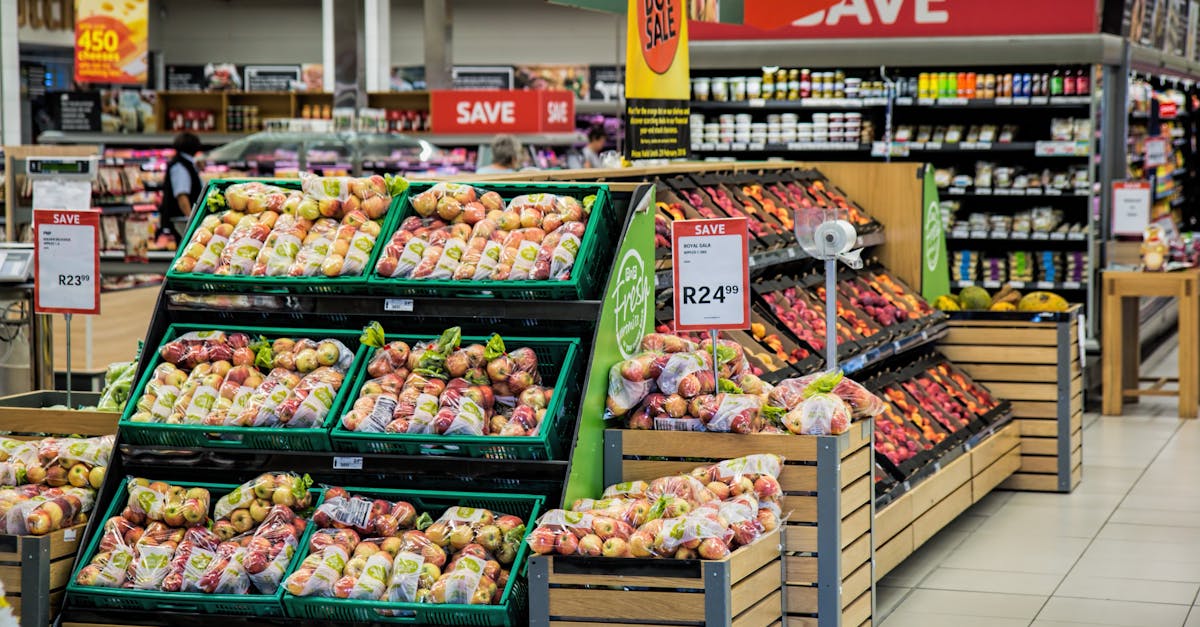The Ultimate Guide to Grocery Shopping on a Budget
Introduction
For many households, grocery shopping is a significant expense that can easily spiral out of control if not handled strategically. Whether living paycheck to paycheck or saving for a larger goal, mastering the art of grocery shopping on a budget can dramatically reduce financial stress. Smart shopping is not just about slipping inexpensive items into the cart, but understanding where value and quality intersect. This guide will teach you how to navigate stores, scrutinize price tags, and make informed choices. So, let's embark on this journey to make every dollar count. With the right strategies, you can fill your pantry without emptying your wallet.
Advertisement
Planning is Key
Before setting foot in a grocery store, a solid plan is paramount. Start by assessing your current inventory—know what you already have and what you need. This practice prevents duplicate purchases and reduces waste. Once your inventory is set, draft a weekly menu that incorporates affordable, nutrient-dense meals. Leveraging a shopping list is not only practical but essential; it guides selections and minimizes impulsive buys. Digital apps can also assist in listing must-buys and tracking expenses. Thorough planning transforms a potentially chaotic trip into an efficient mission.

Jakub Zerdzicki/Pexels
Advertisement
Understanding Unit Pricing
One of the most effective ways to comparison shop is by understanding unit pricing. Unlike the item's price displayed glaringly, unit prices reveal the cost per ounce, liter, or pound. This insight is crucial when deciding between different brands of the same product, as flashy packaging can detract from true value. Often, larger quantities offer better deals, but this isn't always the case. By consistently turning to unit pricing, shoppers can quickly pinpoint the most economical options without sacrificing quality. Developing this habit can lead to significant savings over time.
Advertisement
Seasonality Matters
Opting for fruits and vegetables in their peak season guarantees freshness and cost savings. Seasonally abundant produce is plentiful and, therefore, cheaper. Investing in seasonal items not only maximizes nutritional intake but also elevates taste and quality. To make the most of seasonal buys, be open to adjusting your meal plans based on what's currently in-season. Furthermore, buying local from farmer's markets can often offer even greater savings, while supporting the community and ensuring freshness.
Advertisement
Couponing: The Strategic Saver
Couponing has long been hailed as the ultimate savings tactic, but it requires a strategic approach. Gone are the days of clipping paper coupons; digital apps and store loyalty programs offer easy access to deals tailored to shopping preferences. However, it's essential to avoid buying items simply because they're discounted; focus on products you genuinely need. Stacking coupons with ongoing sales enhances savings. Approached correctly, couponing doesn't just cut costs but can broaden dietary options without breaching the budget.
Advertisement
The Allure of Store Brands
Store brands, often shelved beside their branded counterparts, are a hidden goldmine for budget-conscious shoppers. These products, typically produced in the same facilities as name brands, offer comparable quality at reduced prices. Don't shy away from experimenting with store brands for various items—canned goods, dairy, and cereals often yield significant savings. Reading reviews and trying out samples can ally hesitation and encourage consistent switching to store brands, thereby trimming regular shopping costs.
Advertisement
Bulk Buying: The Smart Approach
Bulk purchasing can indeed be advantageous, serving larger households or when paired with non-perishable items. It's key to maintain awareness of storage capacities and expiration dates. Essentials like rice, pasta, and canned foods are ideal candidates for bulk shopping, considering their longevity. Warehouse memberships cater to bulk buyers, often resulting in outstanding deals. When deliberating a bulk buy, weigh the immediate expense against long-term use and savings.
Advertisement
Reducing Waste Equals Savings
Food waste can inadvertently inflate grocery bills. Implementing strategies to minimize waste begins at home—embracing freezer culture, repurposing leftovers, and ensuring perishable items are consumed timely. Composting reduce waste environmentally while providing nutrient-rich soil for future gardening. Conscious cooking and portion control can prevent overages and underutilization. As a part of evolving spending habits, progressively reduce waste to maximize both meals and funds.
Advertisement
Avoiding Temptation and Impulses
Alongside a steadfast shopping list, discipline is essential to avoid succumbing to clever marketing and store layouts designed to induce spontaneous buys. Remain focused on aisles relevant to your list, steer clear of temptations like candy-packed checkouts, and manage shopping trips post-meals to deter hunger-driven purchases. Awareness of these common temptations, paired with self-discipline, ensures sticking to the budget without accumulating unnecessary items in your cart.
Advertisement
Conclusion
Grocery shopping on a budget is a blend of strategic planning, discernment, and continuous adaptation. By refining habits, such as understanding pricing mechanisms, embracing certain discounts, and reducing food waste, the goal is clear: maximal efficiency with minimal expense. Developing these habits into second nature leads to reduced financial strain and fuller kitchen cabinets. As economic pressures rise, mastering budget-friendly shopping becomes an indispensable skill. With these practices in tow, shoppers can confidently navigate any store and emerge victorious, armed with savings and satisfaction.
Advertisement
